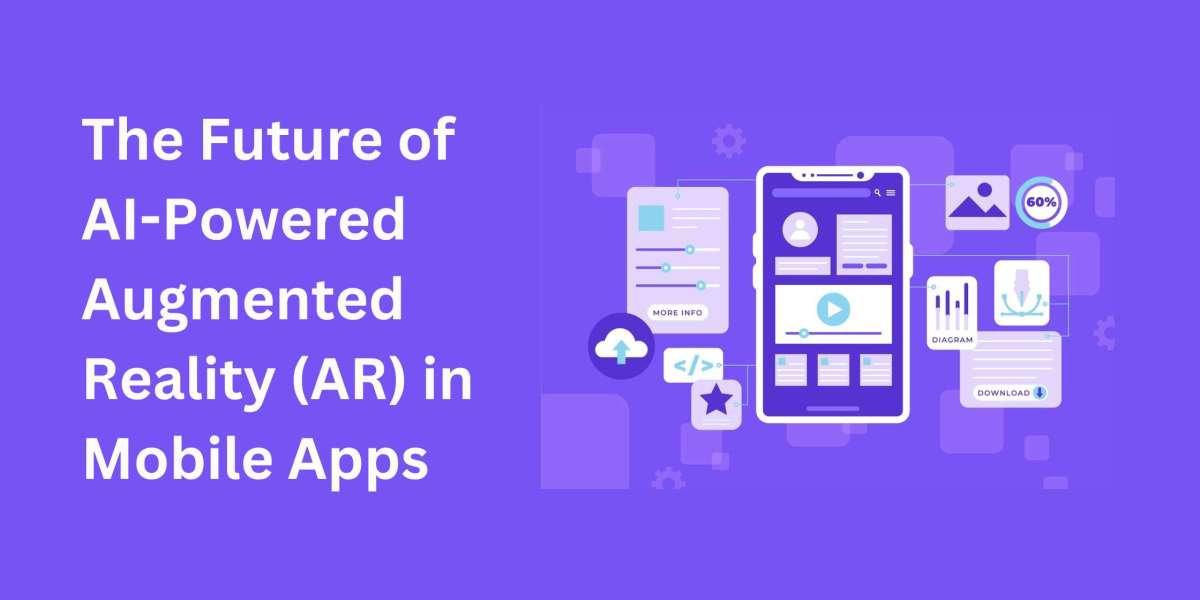In the world of mobile technology, AI-powered Augmented Reality (AR) is swiftly evolving from a futuristic concept to an accessible, real-world application. While AR has been around for a while, it is now finding new life with AI integration. This synergy between AI and AR is unlocking a host of possibilities that were once confined to science fiction, transforming how users interact with apps on a daily basis. But what does the future hold for this dynamic duo, and how will it reshape the mobile app landscape?
The Evolution of Augmented Reality in Mobile Apps
AR began its journey in mobile apps with simple applications like Snapchat filters and Pokémon GO. These early applications provided users with fun and interactive experiences, but they barely scratched the surface of AR's true potential. AR’s ability to overlay digital objects onto the real world created immersive experiences, but it was often a gimmick rather than a fully integrated, intelligent feature.
The game-changer came with AI integration. By combining AR’s ability to blend digital and physical worlds with AI’s processing power and decision-making ability, mobile apps can now offer much more than just fun games and effects. With AI, AR apps can understand and interact with the environment in real-time, allowing for more meaningful, functional, and immersive experiences.
How AI Enhances Augmented Reality Experiences
The potential of AI-powered AR lies in its ability to adapt to real-world environments and predict user actions with a high degree of accuracy. Here’s how AI is stepping up the AR game:
Context-Awareness: AI allows AR apps to be more contextually aware, meaning they can understand the physical environment better. For instance, AI can help an AR app recognize objects in a room and place virtual furniture that fits the space and lighting conditions accurately. This makes AR more functional and relevant to the user, improving the overall experience.
Personalization: AI can learn from users’ behaviors and preferences, adapting the AR experience to suit individual needs. If you’re using an AR app for shopping, for example, AI could suggest products based on your previous interactions or preferences, delivering a truly personalized experience.
Real-Time Interaction: AI enhances AR by enabling apps to respond dynamically to a user’s actions. Unlike earlier AR apps that merely placed static objects over a scene, AI-powered AR apps can allow objects to react or change based on real-time data, such as moving around a virtual object or changing its color depending on external factors.
Improved Object Recognition: One of the most significant advancements of AI in AR is its ability to recognize and process complex objects in the real world. Machine learning algorithms improve the accuracy and efficiency of AR applications, allowing them to identify objects from multiple angles, handle occlusions (when objects block part of the view), and even track moving objects.
Natural User Interfaces: AI-powered AR enables more intuitive, natural user interfaces (UIs). Instead of tapping buttons or using voice commands, AI-powered AR apps can understand gestures, body movements, and eye-tracking. Imagine being able to control a virtual object in an AR game simply by moving your hand or head. This kind of seamless interaction offers a more immersive and user-friendly experience.
The Impact of AI-Powered AR on Various Industries
As AI and AR continue to advance, their combined power is reshaping industries across the globe. Let’s take a look at how these technologies are being utilized in different sectors:
Retail and E-Commerce: With AI-powered AR, the shopping experience has evolved. Virtual try-ons and product visualizations are now more precise than ever. Whether you're buying furniture or clothing, AR can help you see how a product will look in your home or on your body before making a purchase. AI further enhances this experience by analyzing your shopping habits and offering tailored recommendations, improving the likelihood of a successful purchase.
Healthcare: AI-powered AR is making its mark in healthcare, particularly in medical training, surgery, and patient care. Surgeons can now use AR to visualize organs and tissues in real time, with AI enhancing the clarity and accuracy of these visuals. Additionally, AR is helping doctors diagnose conditions by overlaying digital information on a patient's physical body, making examinations more effective.
Education and Training: In education, AI and AR are revolutionizing how knowledge is imparted. Interactive learning experiences, where students can interact with 3D models and simulations, are transforming education. For example, biology students can study the human heart by viewing a 3D model that they can manipulate. AI helps tailor learning experiences, ensuring they meet the needs of each student and offering personalized feedback.
Gaming and Entertainment: In the entertainment industry, AI and AR are taking gaming to a new level. Games like Pokémon GO already leverage AR, but with AI, games are becoming more immersive and intelligent. AI can predict player behavior, enhance non-playable character (NPC) interactions, and create personalized storylines that adapt based on player decisions.
Real Estate and Architecture: AI-powered AR is revolutionizing how properties are bought, sold, and designed. Prospective buyers can now view homes in 3D using AR apps, seeing how a property will look with different furniture and design elements. For architects, AR provides a way to overlay digital models onto real-world environments, allowing for easier visualizations and design adjustments.
Challenges and Opportunities
As with any emerging technology, the integration of AI and AR into mobile apps isn’t without challenges. One of the primary obstacles is the computational power required to run AI and AR simultaneously. The processing demand can be high, especially on mobile devices, which may limit the scope of these apps or affect performance.
However, advancements in mobile processors and cloud computing are steadily overcoming these limitations, making AI-powered AR more accessible to a broader audience. As technology progresses, the future holds tremendous promise, not just in the sophistication of the apps, but in the ease of use and accessibility they offer.
Moreover, as mobile app developers in Atlanta continue to push the boundaries of what’s possible, we can expect new, innovative applications to emerge, providing even more ways to enhance daily life, work, and entertainment through AI-powered AR.
Conclusion
The future of AI-powered Augmented Reality in mobile apps is bright. These technologies are transforming how we interact with the world around us, providing richer, more personalized experiences. From retail to healthcare, entertainment to education, AI and AR are revolutionizing industries by creating smarter, more interactive applications that engage users in unprecedented ways. As the technology continues to mature, businesses that harness its potential will be well-positioned to thrive in an increasingly digital and immersive world. For those looking to build the next generation of intelligent mobile apps, partnering with skilled mobile app developers in Atlanta can be the key to success in this dynamic space.



